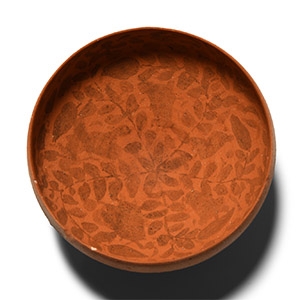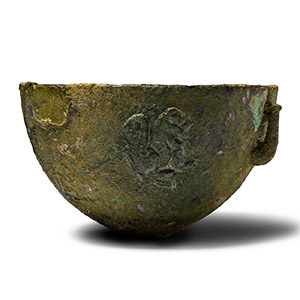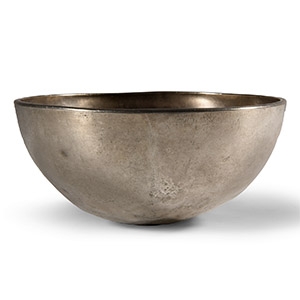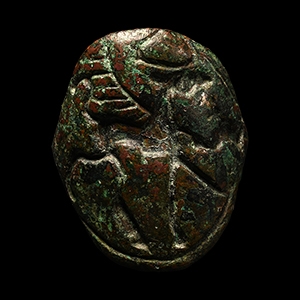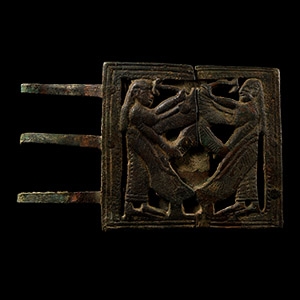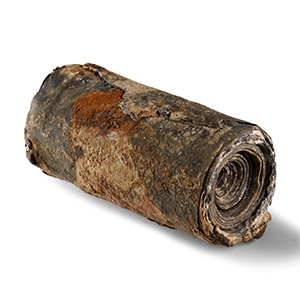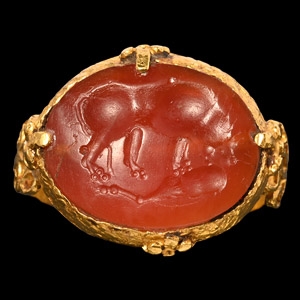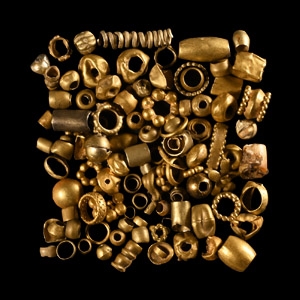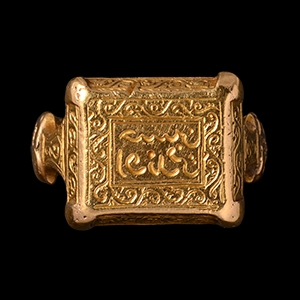Home > Auctions > 5 - 9 March 2024: Ancient Art, Antiquities,
Natural History & Coins
Auction Highlights:
Acquired between 1980-1983.
From the collection of a London, UK, gentleman.
Accompanied by an academic report by Dr Raffaele D’Amato.
This lot has been checked against the Interpol Database of stolen works of art and is accompanied by search certificate number no.12019-213616.
See Ebbinghaus, S., (ed.), Animal-Shaped Vessels From The Ancient World, Feasting With Gods, Heroes, and Kings, Cambridge Massachusetts, 2019, for discussion and comparable examples; cf. also the Walters Art Museum, inventory no.54.791; cf. similar item in ceramic in the collection of Rhode Island Museum under accession no.26.166.
The rhyton was dipped into a krater and held above the drinker's mouth with the spout covered by a thumb, then opened to release a stream of wine into the mouth. The bull was a symbol of man’s control over the nature. Not only were these heads used to serve wine in the banquets, but they were also destined to hold blood from sacrificial animals, that was collected and then poured on the ground as a libation.
From an important collection of Nabataean pottery formed before 1988.
Acquired before 1983.
Ex London gallery, 1990s.
Cf. Müller-Karpe, M., Metallgefässe im Iraq I (Von den Anfängen bis zur Akkad-Zeit), Stuttgart, 1993, p.86 ss. (forme 11, I), pp.235-237, no.1588, pl.142.; cf. Van Ess, M. and Pedde, F., Uruk, Kleinfunde II, Mainz on Rhine, 1992, p.18, no.109, pl.19.
Private US collection, kept in Switzerland, since the 1960s.
Accompanied by a copy of an Art Loss Register certificate no.S00122910.
Accompanied by an academic report by Dr Raffaele D’Amato.
This lot has been checked against the Interpol Database of stolen works of art and is accompanied by search certificate number no.12023-214175.
Cf. Erdmann, K., ‘Die Entwicklung der sāsānidischen Krone’ in Ars Islamica volume 15-16, pp.87-123; Godard, A., The art of Iran, Paris, 1962; Ghirsman, R., Persian Art. The Parthian and Sassanian Dynasties, New York, 1962; Harper, O., Meyers P., Silver Vessels of the Sasanian period, volume I: Royal Imaginery, New York, 1981; Nicolle, D., Sassanian Armies, The Iranian Empire early 3rd to mid-7th centuries AD, Stockport, 1996.
Various are the parallels for this scene, visible on many silver plates of Sassanian and Post-Sassanian periods. Good parallels can be found with plates in the Metropolitan Museum of Art (Peroz or Kavad I hunting rams, Harper & Meyers,1981, p.XII, pl.17), in the Museum fur Islamische Künst, Berlin (King hunting, Harper & Meyers,1981, pl.20) and especially with the silver-gilt plate from Nizhne Shakharovka (king hunting boars, Harper & Meyers, 1981, pl.32).
Ex London, UK, gallery, 1971-early 2000s.
This lot has been checked against the Interpol Database of stolen works of art and is accompanied by search certificate no.12066-214195.
with Pierre Bergé & Associés, Paris, 23 April 2001, no.297 (part).
Acquired by an important European family collection.
Accompanied by copies of the relevant Pierre Bergé & Associés catalogue pages.
This lot has been checked against the Interpol Database of stolen works of art and is accompanied by search certificate no.12055-213660.
Cf. Muscarella, Oscar White, Bronze and Iron Ancient Near Eastern Artifacts in the Metropolitan Museum of Art, New York, item no.292.
Acquired prior to 2000.
British private collection of Mr D.M., London, UK.
Accompanied by an academic report by Dr Raffaele D’Amato.
This lot has been checked against the Interpol Database of stolen works of art and is accompanied by search certificate number no.11753-202365.
Cf. Curtis, J., An Examination of Late Assyrian Metalwork with Special Reference to Nimrud, Oxford, 2013, pls.LXff., for similar decorative patterns on bronze openwork panels; Aruz, J., Seymour, M., Assyria to Iberia, Art and Culture in the Iron Age, New Haven-London, 2016, fig.5, p.159, for an ivory plaque.
The genii symbolised both protection and fertility - their role was to safeguard and replenish the ancient kingdom of Assyria and therefore, on a personal buckle, the wearer of the belt. The representation of divine genii upon a belt plaque provided a link with the king and with the royal family, and it could be that such a belt was worn by important dignitaries, although the structure of the belt and its composition exclude the possibility of military use.
From the property of the late Mr SM, London, UK, 1969-1999.
Private collection, USA, acquired in the 1990s.
Accompanied by a copy of a previous cataloguing information page.
Cf. Wenzel, M., Ornament & Amulet. Rings of the Islamic Lands (The Nasser D. Khalili Collection of Islamic Art), London, 1993, no.292, for a silver ring of similar design.
It was a fairly common practice to re-use Sassanian intaglios in Islamic rings from Iran. In Eastern cultures the boar was a sacred animal with magical powers.
From a late Japanese specialist collector, 1970-2000s.
From a late Japanese specialist collector, 1970-2000s.
From a French private collection, circa 1960s.
Acquired from a private collection in the early 1990s.
Property of a North American gallery.
Accompanied by a copy of a previous cataloguing information page.
This lot has been checked against the Interpol Database of stolen works of art and is accompanied by search certificate no.12103-214334.
Cf. Wenzel, M., Ornament and Amulet: Rings of the Islamic Lands (The Nasser D. Khalili Collection of Islamic Art), London, 1993, nos. 211 and 279, for similar design; see also Content, D. (ed.), Islamic Rings & Gems. The Zucker Collection, London, 1987, no.28.
193 - 204 of 2726 LOTS

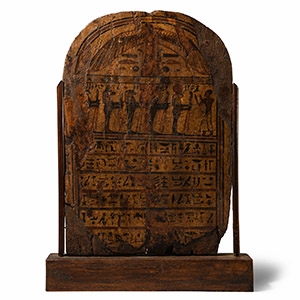
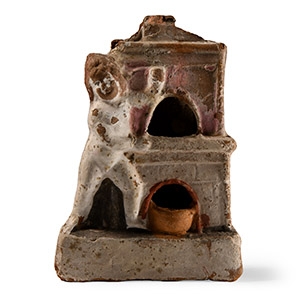

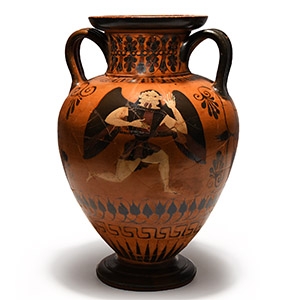
.jpg)
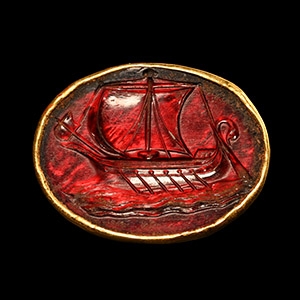
.jpg)

.jpg)
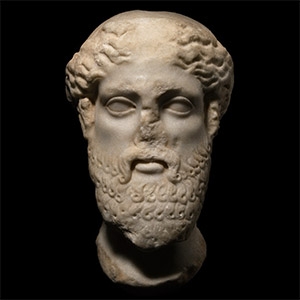
.jpg)
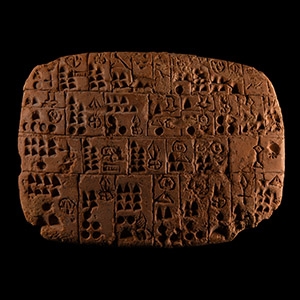

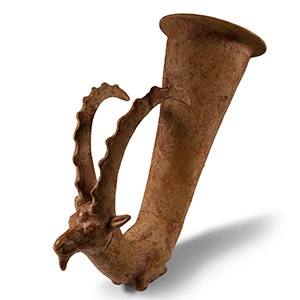
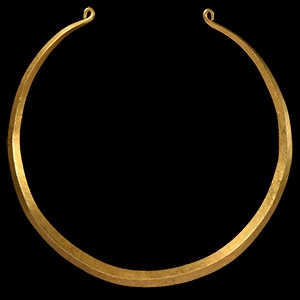
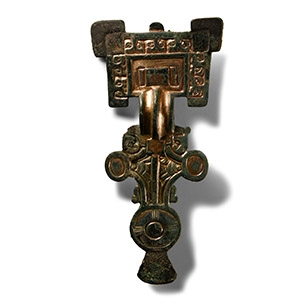
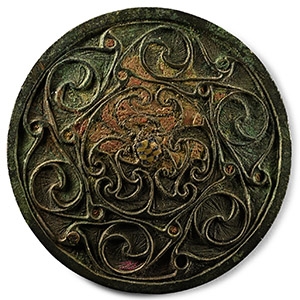

.jpg)
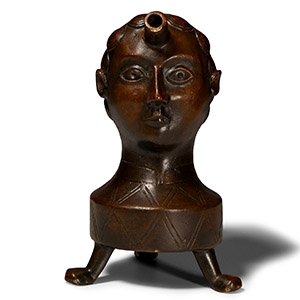
.jpg)

.jpg)
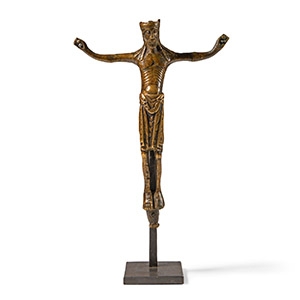
.jpg)
